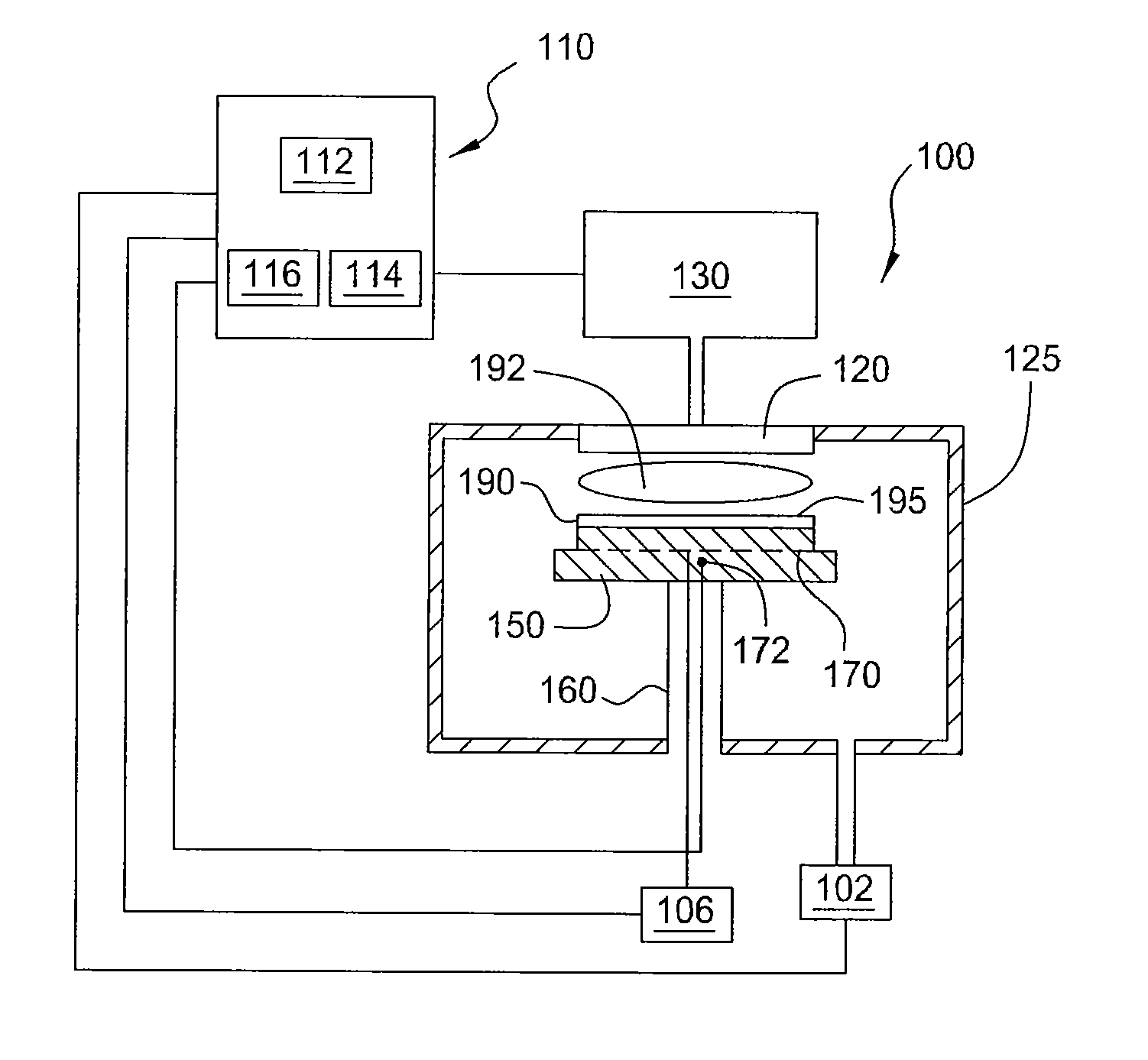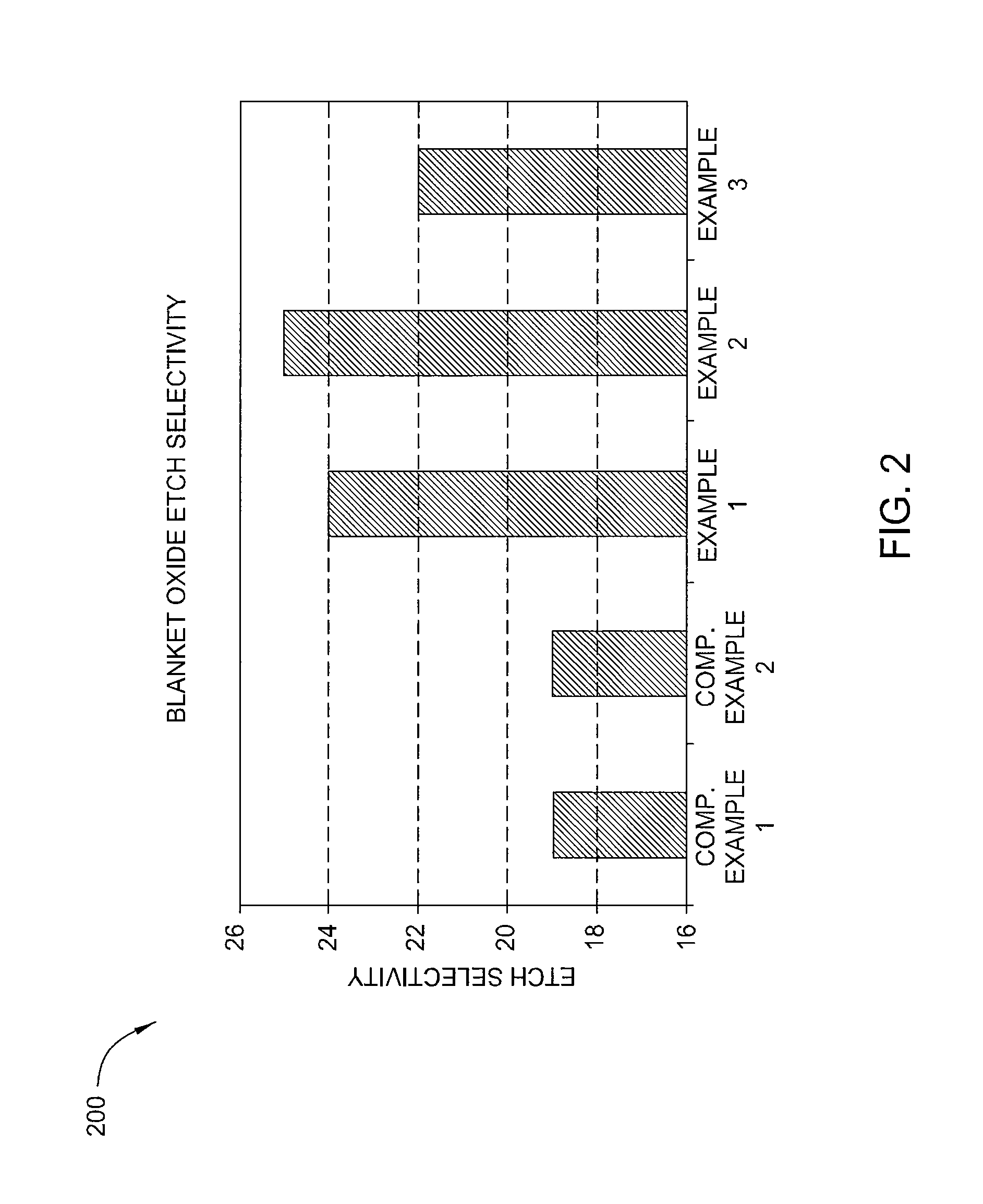Nitrogen doped amorphous carbon hardmask
a carbon hardmask and nitrogen doping technology, applied in the direction of chemical vapor deposition coating, coating, plasma technique, etc., can solve the problems of low-k dielectric material devices with little or no surface defects or feature deformation, and increase the likelihood of defects on the substrate surfa
- Summary
- Abstract
- Description
- Claims
- Application Information
AI Technical Summary
Benefits of technology
Problems solved by technology
Method used
Image
Examples
example 1
[0051]A nitrogen doped amorphous carbon deposition process example includes providing a flow rate of helium to the processing chamber at about 400 sccm, a flow rate of Argon to the processing chamber at about 14,000 sccm, providing a flow rate of C2H2 to the processing chamber at about 600 sccm, and providing a flow rate of trimethylamine to the processing chamber at about 200 sccm, applying a high frequency RF power (13.56 MHz) at about 1,400 W, maintaining a deposition temperature of about 400° C., maintaining a chamber pressure of about 3.5 Torr, with a spacing of about 300 mils to produce a nitrogen doped amorphous carbon layer having an etch selectivity of about 24.
example 2
[0052]A nitrogen doped amorphous carbon deposition process example includes providing a flow rate of helium to the processing chamber at about 400 sccm, a flow rate of Argon to the processing chamber at about 14,000 sccm, providing a flow rate of C2H2 to the processing chamber at about 600 sccm, and providing a flow rate of trimethylamine to the processing chamber at about 500 sccm, applying a high frequency RF power (13.56 MHz) at about 1,400 W, maintaining a deposition temperature of about 400° C., maintaining a chamber pressure of about 3.5 Torr, with a spacing of about 300 mils to produce a nitrogen doped amorphous carbon layer having an etch selectivity of about 25.
example 3
[0053]A nitrogen doped amorphous carbon deposition process example includes providing a flow rate of helium to the processing chamber at about 400 sccm, a flow rate of Argon to the processing chamber at about 14,000 sccm, providing a flow rate of C2H2 to the processing chamber at about 600 sccm, and providing a flow rate of trimethylamine to the processing chamber at about 1,000 sccm, applying a high frequency RF power (13.56 MHz) at about 1,400 W, maintaining a deposition temperature of about 400° C., maintaining a chamber pressure of about 3.5 Torr, with a spacing of about 300 mils to produce a nitrogen doped amorphous carbon layer having an etch selectivity of about 22.
[0054]The Blanket Oxide Etch Selectivity results for comparative examples 1 and 2 and examples 1, 2, and 3 are depicted in FIG. 2. FIG. 2 is a plot 200 depicting the blanket oxide etch selectivity of nitrogen doped amorphous carbon layers formed with varying levels of nitrogen dopant in comparison with previously k...
PUM
| Property | Measurement | Unit |
|---|---|---|
| pressure | aaaaa | aaaaa |
| density | aaaaa | aaaaa |
| temperature | aaaaa | aaaaa |
Abstract
Description
Claims
Application Information
 Login to View More
Login to View More - R&D
- Intellectual Property
- Life Sciences
- Materials
- Tech Scout
- Unparalleled Data Quality
- Higher Quality Content
- 60% Fewer Hallucinations
Browse by: Latest US Patents, China's latest patents, Technical Efficacy Thesaurus, Application Domain, Technology Topic, Popular Technical Reports.
© 2025 PatSnap. All rights reserved.Legal|Privacy policy|Modern Slavery Act Transparency Statement|Sitemap|About US| Contact US: help@patsnap.com



